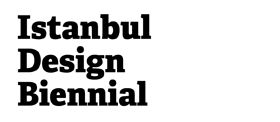Shumon Basar, Superpool, Füsun Türetken ve Tom Dyckhoff wrote letters to Istanbul for the fifth issue of New City Reader.

Dear Istanbul,
Yesterday, I was in The Museum of Innocence, Orhan Pamuk’s grand corollary to his novel of the same name. A friend pointed at a fez hat, and asked me, ‘Do you know what that is?’ I said, ‘Yes. Kemal Ataturk banned them as part of the founding of the Republic.’ She said, ‘Because they were Ottoman.’ Just this week, public debate is raging around the moral and legal status of abortion in Turkey. This was not a battle that liberals ever thought they’d have to re-win; but the assumption that progress – social, economic, biologic – is a one way street is being tested here, in Turkey, which, having been ceremoniously kept out of Fortress Economic Europe during the 9/11 decade, has turned its compassion of optimism in the other direction, east. East may be Al Jazeera Turkey, it may be altering the nation’s time to ally with the Arab world (+3, not +2), it may be Baku or Biskek, Mecca or indigenous MTV. Do you remember in 330AD, some say that you became ‘The New Rome’ – shifting the centre of Christendom’s gravity eastwards, back closer to where it began? Super-cession, adaptation, new names, the vanquish of the past. And now? As Louis Althusser said, ‘The future lasts for a very long time.’
Yours affectionately,
Shumon
8 June, 2012
Tarlabasi, Istanbul
Dear Istanbul,
How could you? It keeps amazing me how careless you sometimes can be. Look at your photo. This is the only place in Beyoglu where one can access the Bosphorus, yet your parking company has claimed it as a giant parking lot. How is it that you cannot come up with better ideas for parking cars?
Cordially yours,
Gregers Tang Thomsen
Dear Academy of Fine Arts,
I wonder if we fall only hardest for those who fill the gaps in ourselves. These are Sean Case’s words in his letter addressed to the imprisoned poet Nazim Hikmet. Following this thought let us go back in time, to the shore of the Bosporus, your location in Istanbul, where my parents studied and first met during the 1960s. I haven’t experienced this period of time but I have been fascinated with you, by images and conversations with colleagues and friends of my parents early on in my life.
Responding a call of a German Professor they left Istanbul for a longer period of time. Their migration inscribes into a tradition of transnational academic exchanges between Turkey, Austria, Germany and France amongst others. Ever since your founding as School of Fine Arts in1883 during the Ottoman Empire osmotic processes of scholarly exchanges have continued and design ideas have crossed borders to then materialize eventually. You as an institution provided the platform for international exchange alike this year’s first Design Biennale in Istanbul. And these historical connections are embodied within my family.
Design, especially Architecture and Planning were crucial political tools in the early years of the Turkish Republic as the search for a modern identity dominated the societal and cultural debate. The quantum leap, which the nation wanted to fulfill, was contrasted by years of war and a lack of resources regarding knowledge after the fall of the Ottoman Empire. Striving to modernize their young country the Turkish Ministries invited architects from Germany and Austria, as many officials themselves had studied in Western Europe and held good contacts especially in Germany, which appears to be forgotten in current German public debates on migration, but that is another letter.
You saw Bruno Taut, Margarete Schütte-Lihotzky and Martin Wagner coming and going as teachers, and you were the first art and architecture school in the country and therefore became incorporated into the Republican reform processes. You constituted the backdrop for discussions on the understanding of art and its function for the young nation-state. At the same time, in 1929, the architect Hermann Jansen won the commission for the urban development plan of Ankara and a German newspaper titled „The development of the capital will be an allegory of the reconstruction of Turkey through Mustafa Kemal…“ In that sense the architect became the translator of kemalistic reform processes and planning a political tool for modernization.
You witnessed World War I, the fall of an Empire, the foundation of a new nation-state and the migration of students and teachers. During World War II you stayed neutral and hosted academic figures who fled the political transformations and the Holocaust. Following Hannah Arendt’s idea that politics needs freedom, I wonder if design needs freedom, and if the Design Biennale offers a space of freedom as you did back then? Will the Biennale be neutral or influenced by politics? Will it form a hinge joint across borders as you used to do?
Unfortunately, dear stone, dear concrete, you cannot answer my queries. But, I wonder what these walls would tell me about the past and the crises you have witnessed? Crisis has created dependencies and migration, which in turn created exchange of ideas to an international benefit. In Butler’s language our interdependencies become transparent through crisis. But crisis also created loss. Speaking of loss and returning to the starting point of my letter we have to realize that the gaps in ourselves might never be filled. Maybe it isn’t a tragedy as there is a beautiful word for it called hüzün.
Füsun Türetken
When are you going to start working with the gecekondu, rather than against them, clearing them, uprooting families and disrupting lives?
Tom Dyckhoff









Leave a Reply